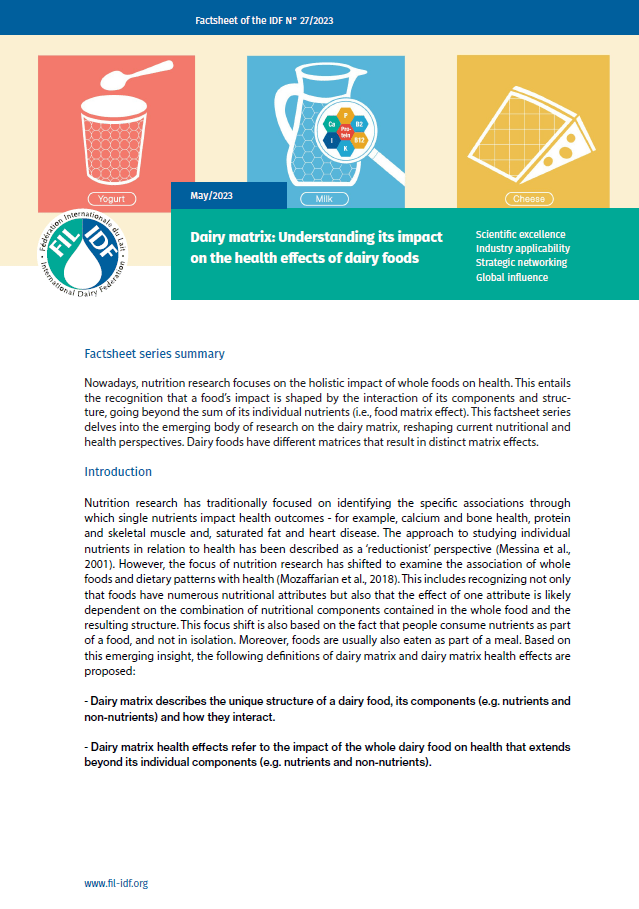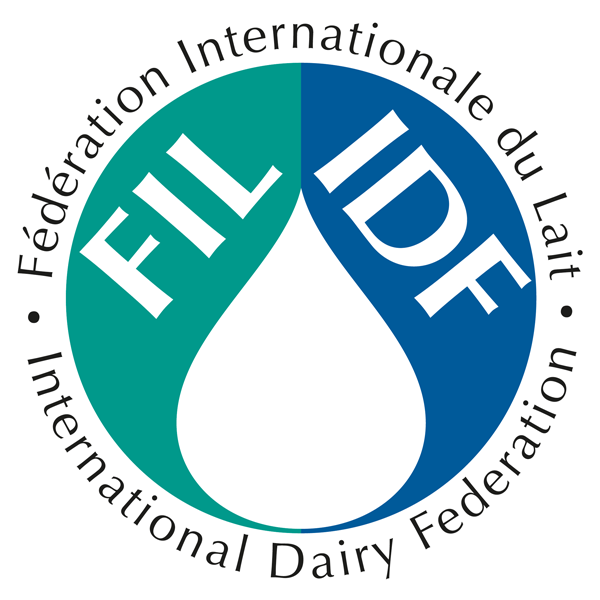Factsheet of the IDF N° 27/2023: Dairy matrix: Understanding its impact on the health effects of dairy foods
Couldn't load pickup availability
Document info
| pages | 5 |
|---|
Publication description
Nowadays, nutrition research focuses on the holistic impact of whole foods on health. This entails the recognition that a food’s impact is shaped by the interaction of its components and struc-ture, going beyond the sum of its individual nutrients (i.e., food matrix effect). This factsheet series delves into the emerging body of research on the dairy matrix, reshaping current nutritional and health perspectives. Dairy foods have different matrices that result in distinct matrix effects.
Revised December, 2023.
Cite this content as:
International Dairy Federation. (2023). Dairy matrix: Understanding its impact on the health effects of dairy foods (Factsheet of the IDF n° 27/2023). https://doi.org/10.56169/DEIX9744


